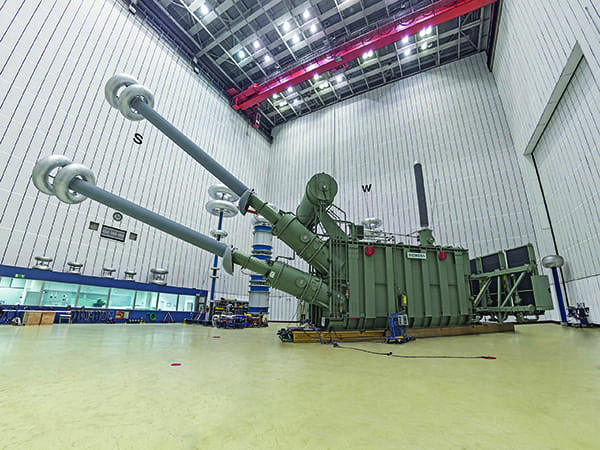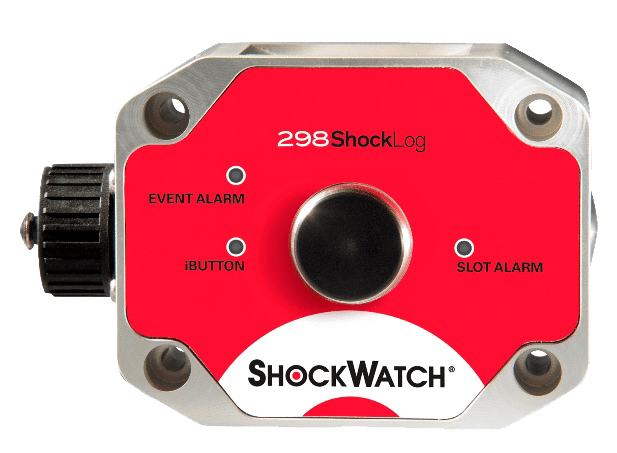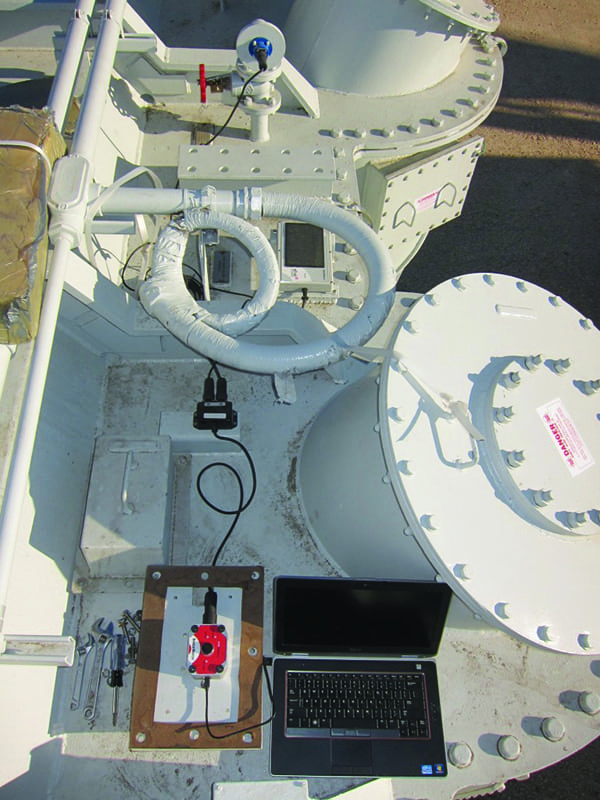The safe transportation of transformers, gas turbines, generators, and other electrical production equipment is a vital component in suppliers' current business models and future growth potential. Equipment is often exposed to impact and vibration during transport, which must be closely examined. Damage, some of which can't be seen by the naked eye, can lead to pricey returns and repairs.
As most people in the power industry know, Siemens is a major player in the electrification value chain, offering power generation, transmission and distribution, smart grid, and other technological solutions. The company prides itself on the high quality and exceptional reliability of its products.
The safe transportation of transformers, gas turbines, and other electrical equipment is vitally important to Siemens' business. Yet, monitoring equipment for damage, which could be internal to components and difficult to detect without performing lengthy and complex testing, was a challenge. A new solution was needed to speed up the process, foster client trust, and save money.
How Are Your Shipments Handled?
The costly process of shipping multi-ton, million-dollar-plus power transformers (Figure 1) required a reliable and transparent monitoring system to verify the integrity of equipment upon delivery. The solution needed to monitor the impacts and vibration experienced during transport to identify potential damage to the equipment.
For years, the Siemens Brazilian operation used paper recorders to monitor impacts the company's transformers absorbed throughout the logistics process. A paper recorder uses a mechanical stylus to record impacts onto a piece of waxed paper similar to a seismometer recording an earthquake. However, the process can be susceptible to jamming, running out of paper, and poorly annotated time/date information. Another issue Siemens had with paper recorders was the manual labor and time required to analyze the results and compile a report on the findings. Additionally, it took five to six days to get the results back after delivery, which delayed the equipment installation–costing the end-customer time and money.
Despite the capacity to check vibration logs through paper recorders after delivery, the Siemens team in Brazil desired a more-efficient, accurate, and connected method to increase customer trust and reduce costs. Also, they wanted a product that provided all of the above in a lightweight package.
Digital Impact Recorders
In 2003, Siemens' Brazilian office began to search for a digital impact recorder that could help the company more reliably transport its transformers. The group was looking for a solution that was small, lightweight, easy to handle, and recoverable.
SpotSee provides a host of products that monitor impact and vibration (among other environmental conditions) and digitally record the data for easy analysis. These products can identify potential damage in real time and send data to the SpotSee Cloud using cellular, satellite, or Wi-Fi communication. ShockLog is one of SpotSee's flagship products (Figure 2). This device accurately records all impacts over a period of time, including detailed waveforms, and provides an easy means of analysis. The ShockLog product offered Siemens a significantly more-valuable and reliable way of recording impacts when compared to the previously used paper recorders.
Siemens opted to use SpotSee's ShockLog because it checked off all of the boxes while still remaining affordable. These devices removed almost all of the manual labor required by the previously used paper recorders and provided superior tools to analyze results. Two ShockLog units securely attach to a transformer creating an accurate representation of impacts across the entire unit (Figure 3). The ShockLogs become a part of the power transformer unit and are tamper-proof, further validating the data that is constantly being recorded. These devices monitor all impacts across the x, y, and z axes, and enable easy analysis with a computer instead of by manual interpretation.
The largest indicator of potential damage is based on how many g's (one g is equivalent to the downward force of gravity on the surface of Earth) of force a transformer receives. Siemens uses 1g, 2g, or 3g thresholds for its transformers. The ability to pre- and post-filter ShockLog impact data provided Siemens with a more accurate picture of impacts that actually damaged transformers. Siemens was then able to create predictive models based on past results that now form the basis for determining if certain impacts are likely to have damaged a transformer. To conservatively account for potentially detrimental impacts, Siemens sets its maximum threshold less than the impact threshold known to cause damage in its transformers. If these limits are exceeded, the ShockLog unit creates an alert letting Siemens know there could be damage.
The ability to have permanent and easily accessible data logs cannot be overstated. Ultimately, only 10% of all transformers that suffer an impact in excess of the threshold value are actually damaged. By using ShockLogs to evaluate the data, Siemens can quickly identify which impacts are more likely to have caused damage to the transformer.
Tracking Pays Dividends
In one example, a transformer was being transported to a client, and it sustained an impact higher than the 2g threshold. The attached ShockLog alerted Siemens, and the impact waveforms were analyzed. Siemens identified that this type of impact duration could result in damage to the transformer and ordered a more thorough inspection of the product. Siemens alerted the client that potential damage occurred during transit and assured them that a full inspection would resolve any issues.
The inspector was unable to see any damage initially but continued his inspection and found that the transformer had actually been harmed. Siemens communicated this to the client and was able to resolve the issue by repairing the equipment before it was placed in service. This not only saved Siemens money by not having to fully replace the unit, but also saved the company from any potential damage to their client relationship. Without the ShockLog alert, the damage may have gone undetected. At a minimum, it would have been much harder to discover or taken longer to identify.
Since becoming a customer in 2003, Siemens has further enhanced its image as a reliable provider of transformers and electrical components thanks to SpotSee's solutions. After thousands of shipments and countless impact data points, Siemens has created a database of waveforms that represent the acceleration magnitude and duration that can result in damage to transformers. Siemens has learned that certain waveforms relate to certain types of damage. This is vital to the logistics process and allows Siemens to better predict the damage that may have occurred during transit.
Client-Supplier Relationships Strengthened
Siemens can easily share any of this data with clients to either prove safe transit resulted or show that potential damage may have occurred. When problems are detected, the company can ensure that the transformer is quickly repaired or replaced. This is especially useful for insurance purposes and to build trust between Siemens and its customers. Having a log of every impact suffered by the transformer throughout the logistics process means that there will be definitive proof of whether or not damage occurred during transport. This could potentially save Siemens millions of dollars because the company can prove who's at fault. If there was damage, Siemens will either repair the transformer or, at a client's request, deliver a new one.
Beyond the aspect of money, all suppliers want to build a strong and transparent relationship with their clients, and ShockLog allows them to further that goal. The damage to a company's image and future business due to the delivery and approval of a damaged component far outweigh the immediate monetary damage of repairing or replacing a unit. ShockLog has been able to directly help Siemens maintain client relationships in partnership with the company's own customer service practices.
Every delivered transformer is thoroughly inspected upon arrival, but transformers that receive an impact above an acceptable threshold are more stringently evaluated for any potential damage. Knowing that the transformer could have been damaged, inspectors are aided greatly in either finding or disproving the potential damage. The goodwill fostered with clients after letting them know that the recently arrived transformer needs to be inspected closely because of possible damage is immense. Demonstrating to clients that Siemens cares to such an extent about the reliability of their products builds large amounts of trust, which is typically a main business goal for all companies.
An added benefit is the ability for ShockLog units to be reused. About half of all installed ShockLog units are recovered and reused. The remaining 50% aren't reused because the return shipping costs outweigh the cost of buying a new unit. Siemens Brazil uses 200 ShockLog units each year on more than 150 shipped transformers. The ability to reuse ShockLog units allows Siemens to only buy 50 to 60 new devices each year, helping limit costs.
For 15 years and counting, SpotSee has helped Siemens grow client relationships by providing a transparent and accurate picture of the impacts sustained during transportation with ShockLog. SpotSee ultimately saves Siemens money, especially in the long-term, and allows the company to further grow its reputation as a reliable supplier of quality power transformers. ■
–Ty Stuelpe is vice president–Global Sales and Marketing with SpotSee.



